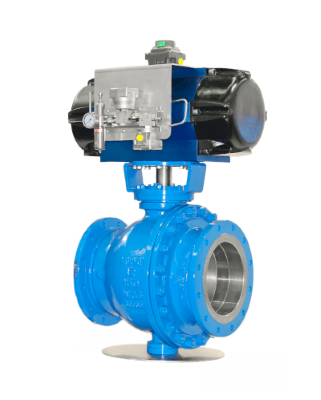What Is a Valve Actuator?

A valve actuator is a device used to automatically open and close control valves as part of the automatic control systems in chemical plants, air conditioning equipment, and more, to regulate the flow of fluids.
Valves equipped with these actuators as their driving mechanism are often referred to as automatic valves, and when they are electrically operated, they are known as electric valves.
Valve actuators are available in pneumatic, electric, or hydraulic drive systems, but the pneumatic type is the most commonly used due to its simple structure and high output capacity.
Uses of Valve Actuators
Valve actuators find wide application in machinery requiring automated fluid control.
A typical example is the variable valve lift mechanism used in automotive engines, which adjusts the volume of air in the engine by opening and closing intake valves based on engine speed. This enhances ignition performance, mitigates excessive combustion, reduces environmental impact, and improves fuel efficiency.
Additionally, there are valves with straightforward on/off functions, such as those used in automated restroom faucets triggered by sensors.
Principle of Valve Actuators
Pneumatic valve actuators employ compressed air to pressurize and drive a piston inside the actuator. This converts the piston’s motion into rotational or vertical movement of the drive shaft, thereby controlling the opening and closing of the valve and regulating fluid flow. Removal of pressure causes the piston to return to its initial position, moving the valve in the opposite direction. A device known as a positioner is used to adjust air pressure.
This type of actuator features a simple structure with few control components and is suitable for repetitive use. However, it may not provide precise control, and it requires high-pressure air for operation.
Electric valve actuators operate by converting electrical energy into rotational and vertical movement of the actuator. Unlike pneumatic actuators, electric actuators offer precise control as they directly govern valve opening and closing. They require only an electrical power source for operation.